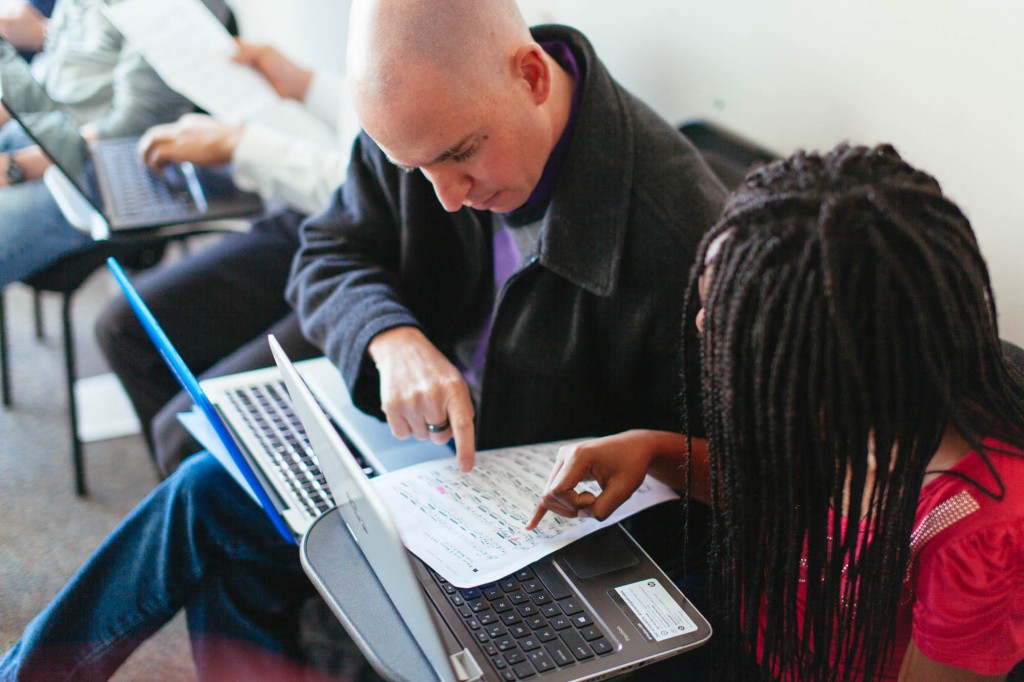For more than two centuries, the Baroque era has dominated music instruction. Drawing on Bach, Handel, Vivaldi and others, the curriculum in many music theory courses typically features a heavy dose of part-writing in a particular style.
Eastern Mennonite University assistant professor of music Ryan Keebaugh says beautiful music undoubtedly came out of that period. “But why are we using that one small period of history for the entire canon?” he asks. “The music students listen to now isn’t composed that way.”
Music department chair Joan Griffing began a discussion on changes to EMU’s curriculum by asking faculty to read the College Music Society’s November 2014 manifesto, “Transforming Music Study from its Foundations: A Manifesto for Progressive Change in the Undergraduate Preparation of Music Majors.”
It recommends more integrated, holistic and relevant methods in music higher education curricula. The faculty agreed with its premises and, using this document as their guide, went about making changes to the basic music major course structure.

“Times have changed, so we should be approaching music education differently. Medical students aren’t still taught the way they were 200 years ago,” Keebaugh says. “We really want to train music majors to be successful in the 21st century.”
EMU will take that different approach, beginning in 2016-2017. Students will begin with “Fundamentals of Music,” a three-credit “boot camp” course to review the basics and hone skills, and then take a new, integrated, two-course sequence called “The History and Techniques of Music” for a full year. The classes, six credits each in fall and spring, will meet five days a week, giving students significant contact time with professors and helping them learn the complex language of music theory in context.
Keebaugh says this innovative integration of history and theory has been implemented by only a handful of larger schools. EMU was already moving toward that integration, as music students were required to present both a history project and theory project as part of their senior assessment.
“No other institution around here does that, so we started asking how we can take this further,” Keebaugh says. “This is a big step in a new direction. We have to stop getting students to fit our mold and instead change our mold to meet our students’ needs.”
Keebaugh and fellow music professor James Richardson will team-teach the new history and theory course. Keebaugh will emphasize theory and Richardson will focus on history, but they will work closely together and provide abundant experiential activities.
In covering medieval music, for example, Keebaugh envisions having students study the scores of early Gregorian chants in their original notation, sing the pieces, maybe learn a period dance and then try to compose in that style. Students would produce some medieval melodies before looking at how and why those melodies transitioned into the harmonies of the early Renaissance period. They would continue that process with each era. Newer styles, such as rock, blues, jazz and world music will also be included.
“They will see the development of history and theory together and how it moved and changed,” Keebaugh says. “We’ve talked with a few students, and they’re really excited because of that connection.”
The changes, for now, only affect the department’s foundational courses. Concentrations for majors include music education, performance and interdisciplinary studies. The music curriculum also includes courses available to all EMU students, regardless of major, such as “Conducting,” “World Music,” “Listening to Film,” “Introduction to Music Technology” and “Appreciating Music Making.”

I have loved Ryan for years. Really enjoyed working with him. A major influence in my Christian jounery. Hope I’m still around to see where him life leads him.